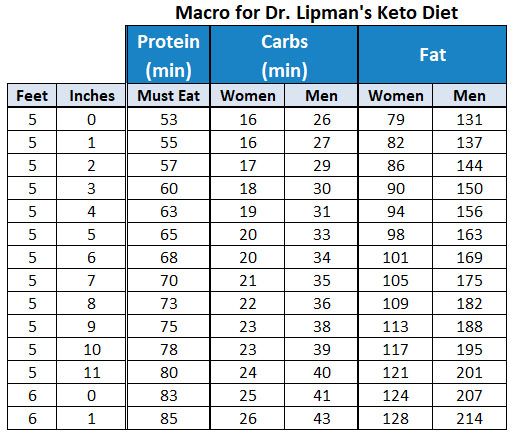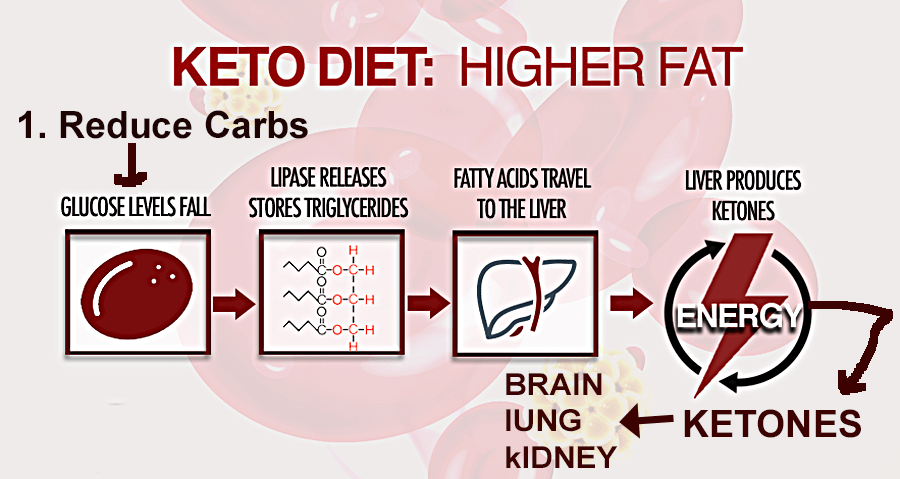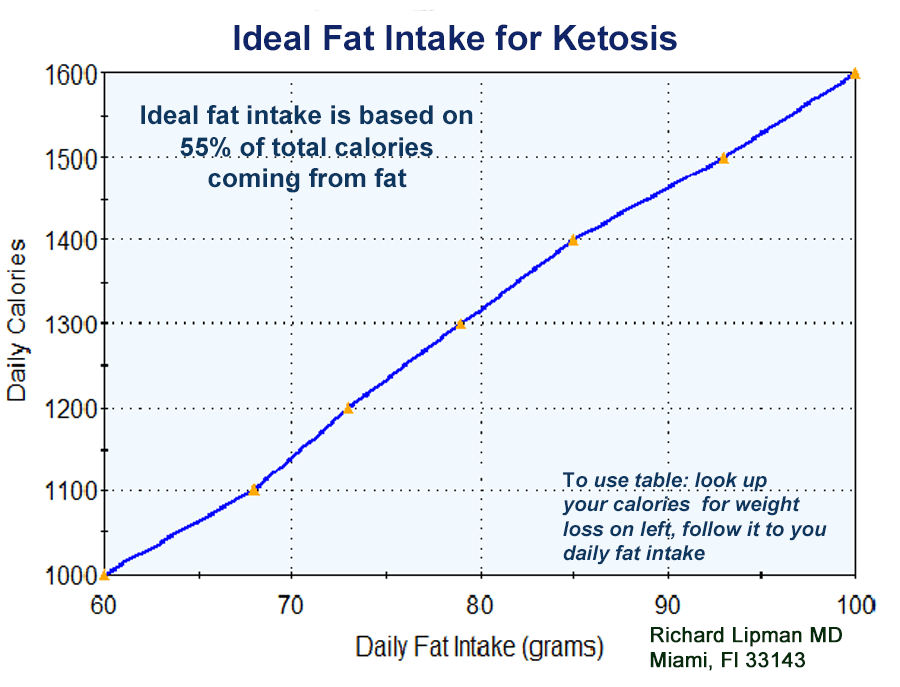Keto Diet From Dr. Lipman
Fast, Safe, and Healthy Ketogenic Weight Loss
The Keto Diet from Miami Endocrinologist Dr. Richard Lipman offers fast, safe and healthy weight loss. Weight loss is achieved by following a high protein, moderately high fat, and low-carbohydrate diet. This forces the body to burn fat instead of carbs for metabolism.
Normally, the body gets most of its energy from ingested and stored carbohydrates. Reducing net carbs to less than 50 g/day forces the body to look towards stored fat cells for energy. Stored fat breaks down into fatty acids which are then converted to ketone bodies. They travel to the brain and increase energy while decreasing hunger. They also provide energy to our muscles and tissues.
Two to three days after starting the keto diet, the fat in the cells start being used for fuel and begin to shrink. Then they are excreted in the urine as ketones. The ketones can be measured in your urine with a tiny dipstick. This gives you a way to directly measure the rate and degree of fat burning. A negative test implies a hidden carb in your diet and gives you a chance to reassess your food choices.
Keto Diet Macros
“Macros” is an abbreviated term for macro-nutrients in the Keto Diet. Important macros you must be mindful of while on the keto diet are “the big 3” nutrients: carbohydrates, fats, and protein. Consumption of these macros is dependent on your age, height, gender, and goals. During your first appointment with Dr. Lipman, he will assess your medical history, medical problems, metabolism, blood levels, thyroid function, and weight loss goals. If the keto diet is right for you, he will help determine the right macros for you.

Daily Net Carbs: How Many Carbs on the Keto Diet?
The benefit of eating a near zero carb diet like the keto diet is that you will never have to worry about cravings or hunger. This keto diet results in rapid weight loss as fat deposits are broken down to provide energy for metabolism. Carbs can cause a quick rise in sugar and insulin, only to fall leaving you hungry and looking for more sugar. To reach ketosis, you will need to reduce your net carb intake to 20 to 75 net carbs per day. Thirty net carbs per day may be better maximum per day for faster weight loss. This forces your body to burn fat instead of carbs. There are two ways to find your ideal net carbs intake:
Low to High Method
Start from a low level of net carbs to ensure you quickly enter ketosis (about 20 grams of net carbs per day). When you detect ketosis after about 2-3 days, start adding net carbs (about 5 grams each week) until you detect a very low-level or no ketones (using Ketostix or blood ketone meter). This is usually the most reliable and quickest way to discover your net carbs limit. It could be a bit hard the first couple of days, as you have to give up almost all carbs from one day to another, but it will be worth it.
High to Low Method
Assuming you’re not in ketosis, start from a relatively high level of net carbs (about 50 grams per day) and keep reducing the amount (about 5 grams each week) until you detect presence of ketones. This is a less difficult approach. However, it is not recommended because you may spend a long time out of ketosis before you find you net carbs limit.
If you can’t see any ketones, be patient. It typically takes 2-3 days for your body to deplete its sugar (glycogen) stores, so don’t expect to be in ketosis after just a day of low-carb. Remember, while ketosis is a favorable condition and an indication that your body is using fat for fuel, you can still lose weight even without being in ketosis. A diet high in fat, adequate in protein, and low in carbohydrates is naturally sating. This makes you less hungry and therefore helps you lose weight.
Protein Requirements on the Keto Diet
The body needs a certain amount of protein to maintain healthy tissues and to increase muscle mass if you are working out. Protein is the most sating of the three macro-nutrients. Therefore, when you eat enough protein you’ll experience reduced hunger and cravings.
The accepted standard for the amount of protein you need to eat daily is 0.6 – 1.2 grams of protein per pound of lean body mass. Your lean body mass is your total body weight minus your fat. A standard that is commonly accepted in the keto community is 0.8 grams of protein per pound of lean body mass.
For example, if you currently weigh 180 lbs and your body fat is at 30%, your lean body mass is 126 lbs. In order to calculate your daily protein multiply 126 x 0.6 to 1.2, and you’ll get a range of 76g to 151g or protein/day. The minimum amount you need in order to maintain your bodily functions and muscle mass is 76 grams.
A simpler method is to take 1/3 or you body weight = required protein. For keto diets 2/3 of your body weight equals faster weight loss. The 180 lb individual then needs 120 g of protein.
It comes down to about 100 grams of protein per day for most people, and between 25-40 grams of protein per meal. (This depends on how many meals per day you’re eating.) Meeting this goal will make weight loss and muscle gain (or maintenance) much easier.
Fat Intake Needed for Weight Loss on the Keto Diet
Fats are the next most important macro-nutrient on the ketogenic diet. They help you feel full for longer periods of time, will give you energy, and are essential for maintaining your hormonal balance. However, there’s a catch: it’s possible to eat too much fat, to the point that you don’t burn off the excess body fat as quickly. Even when following a ketogenic diet, you still need to burn more energy than you consume in order to lose weight.
Fats have the highest amount of calories of all the macro groups. After taking into account the amount of protein you need to consume, fat is used to fill in the caloric gaps caused by removing the carbs from your diet. Fats typically consumed on a ketogenic diet include avocados, coconut oil, butter, avocado oil, olive oil, and limited quantities of nuts and cheese. Some people tend to overdo some of these foods, and it can stall weight loss. If you know you’ll eat too much, cheese, nuts, or peanut butter, it might be safer to just avoid them.
You can calculate ideal fat intake based on daily caloric allowance in the graph below:



